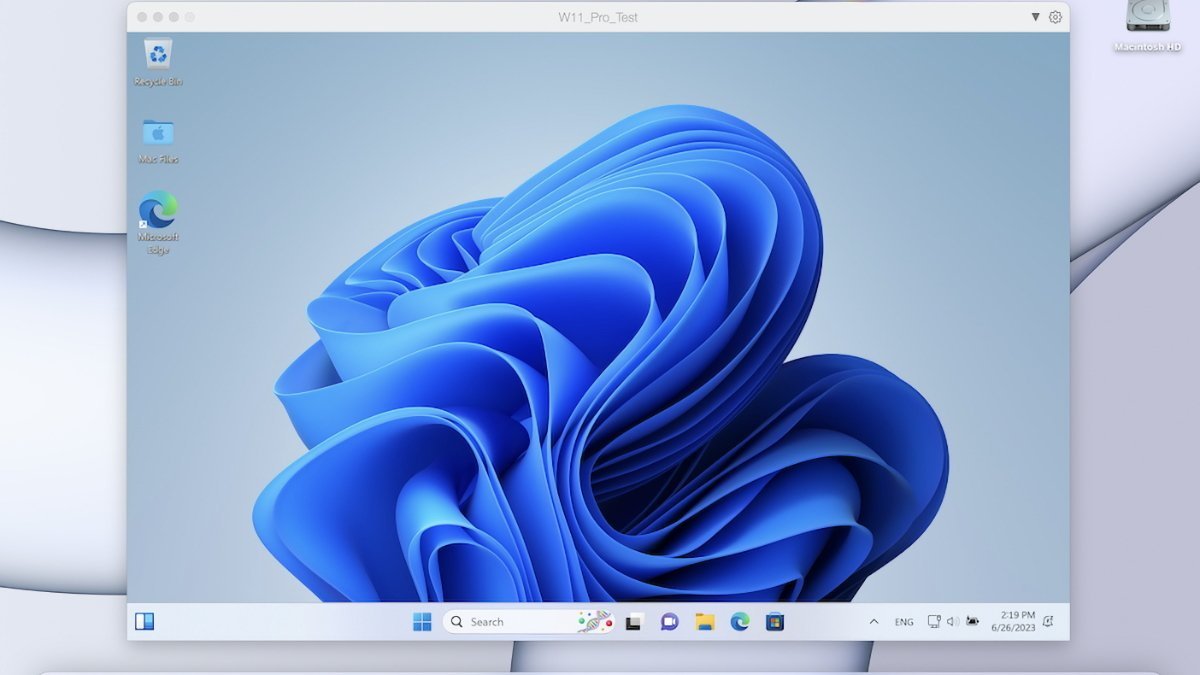With Parallels Desktop, it's now possible to use select Apple Intelligence features inside Windows applications. Here's how it works, and what you need to know.
On Monday, macOS Sequoia 15.1 was released, and Apple's latest suite of AI-powered tools, dubbed Apple Intelligence, became available to the general public. Apple Intelligence can be used to edit images, summarize conversations, and edit text through the help of generative AI software.
Apple Intelligence is only available on Macs equipped with Apple Silicon chips running macOS Sequoia 15.1 or newer. Now, an update to the popular virtual machine application Parallels Desktop lets you use Apple Intelligence features such as Writing Tools within Windows apps.
Writing Tools, Apple's system-wide text editing utilities, can be used to adjust the tone of texts, or proofread and summarize them. Writing Tools can change user-provided text and make it sound more friendly, professional, or concise, among other things.
If you have an Apple Silicon Mac with Apple Intelligence enabled and the latest version of Parallels Desktop (version 20.1) installed, you can start using Writing Tools in Windows apps fairly quickly.
To be able to use Writing Tools, it's necessary to ensure that the Parallels Tools have been updated on your Windows virtual machine.
To check if your Parallels Tools are up to date, you can open the Parallels Desktop Control Center, and then launch your Windows virtual machine. After that, you can update the Parallels Tools from the macOS menu bar, by selecting the Actions menu, and clicking on Update Parallels Tools if the option appears.
Writing Tools is currently the only Apple Intelligence feature that can be used within Windows apps via Parallels Desktop. While the idea of using Writing Tools in Windows apps may appeal to some users, there are already plenty of similar Windows-compatible apps that function without workarounds, such as Grammarly.
Aside from Writing Tools, Apple Intelligence also powers utilities such as the Clean Up tool in Photos, while macOS Sequoia 15.2 introduces support for image generation through Image Playground. Apple Intelligence is also available on iPhone and iPad, with iOS 18.2 and iPadOS 18.2, respectively.
From Monday through Wednesday, Apple announced a trio of M4-powered Mac models — a new iMac, a new MacBook Pro, as well as a redesigned Mac mini. Apple Intelligence and its associated features are available on all of the newly announced computers.
 Marko Zivkovic
Marko Zivkovic








-m.jpg)






 Christine McKee
Christine McKee
 Malcolm Owen
Malcolm Owen


 Andrew Orr
Andrew Orr
 Andrew O'Hara
Andrew O'Hara
 William Gallagher
William Gallagher





-m.jpg)



4 Comments
I love Parallels Desktop - I’ve used it for years in order to run TurboTax Business in a Windows x86 VM and to test a Java app I developed on that VM as well as x86 Linux VMs. But I really don’t see the point of it on ARM based Macs. There hardly are any ARM Windows users or apps and while ARM-based Windows can run most x86 Windows apps, it shouldn’t be used to test if an app is x86 Windows compatible. I also can’t run x86 Linux VMs.
As a result I kept my x86 Mac around with Parallels on it - just so I can continue with the above use cases. In other words, it sits in a drawer most of the time while I use a nee Mx based Mac the rest of the time. I wish Parallels had found a way to do Rosetta-like x86 emulation to let me get rid of my old Mac. Emulation is slow, of course, but speed isn’t critical.
Will Apple Intelligence in Parallels Desktop give better and more secure AI than Microsoft's own product? This reminds me of the time when M1 Macs could run native windows code in Rosetta faster than the same native windows code could run on Intel x86 CPUs.